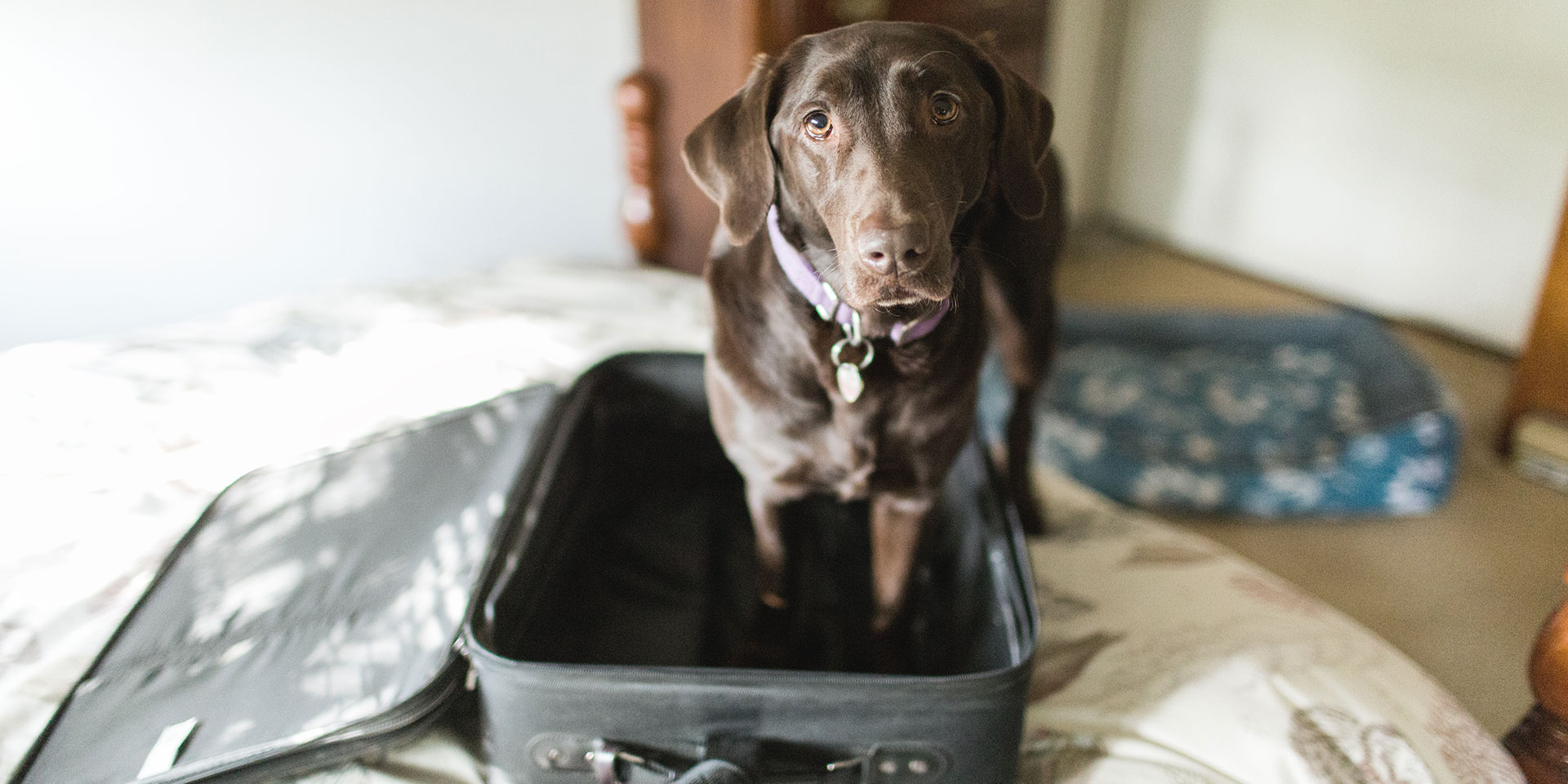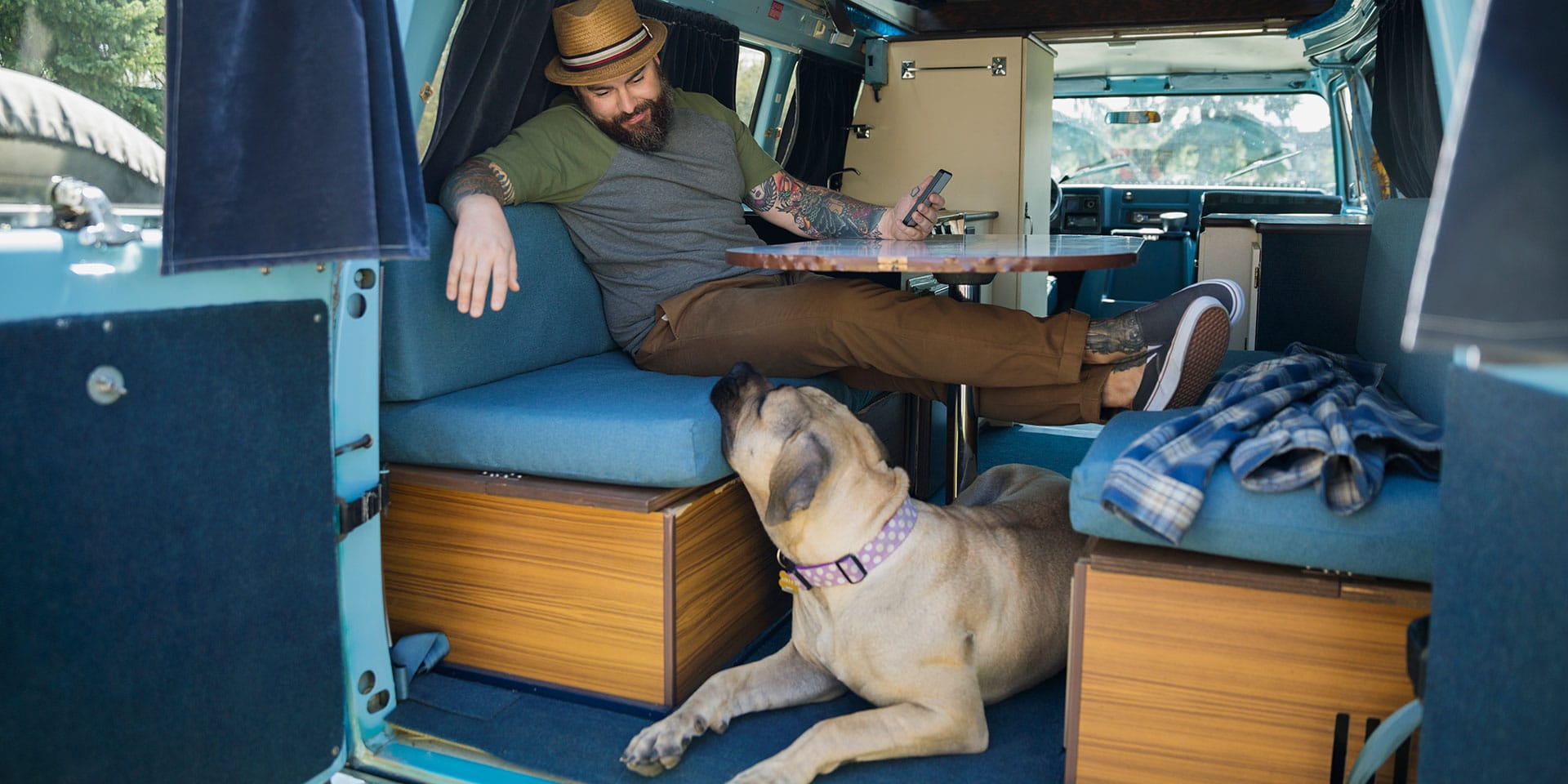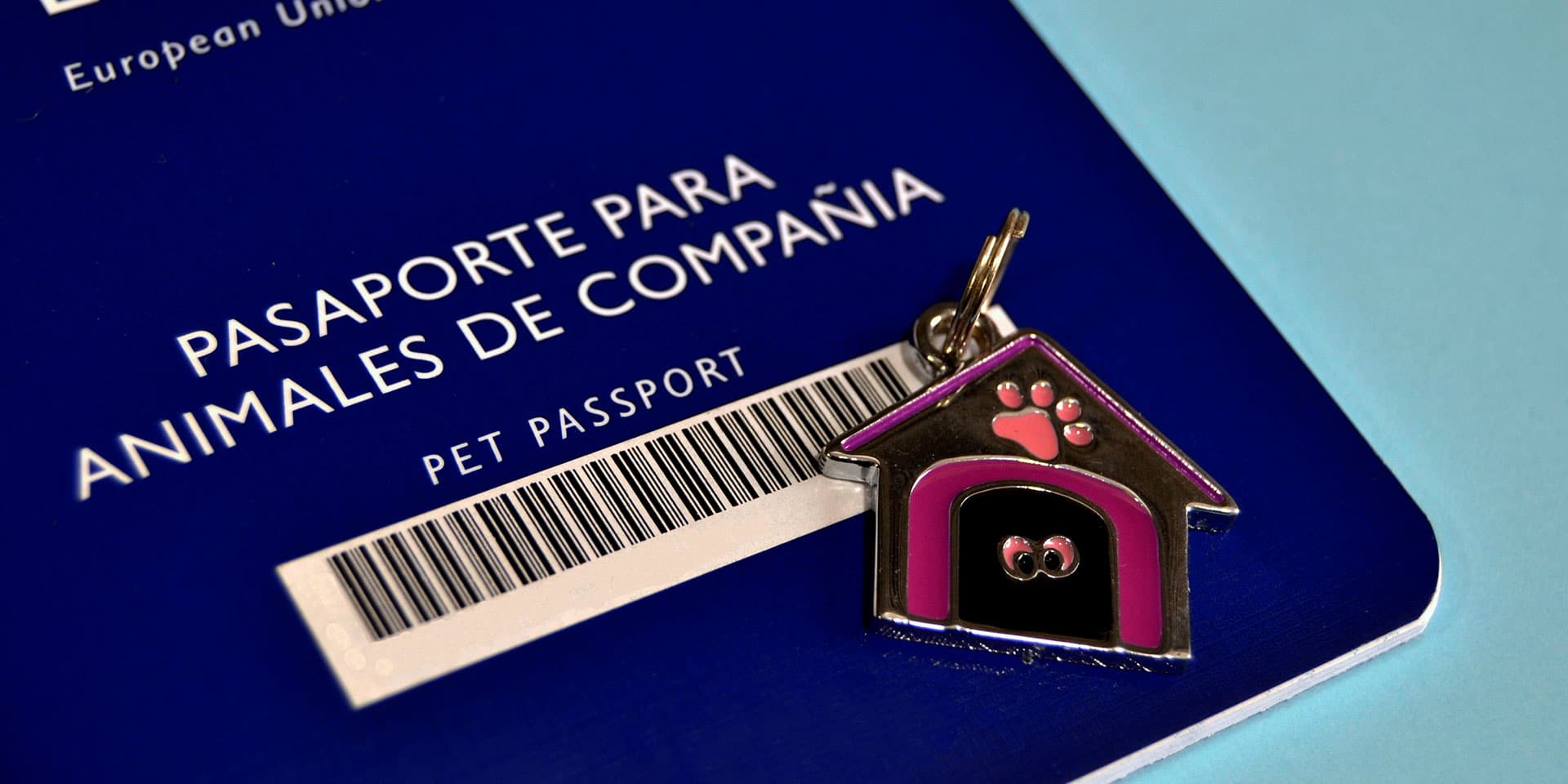
Planning a trip with your pup might take more planning than you realize. (Photo: Getty Images)
Tips + TrendsTraveling with Your Pup? What to Know before You Grab the Leash and Go
By Tasha WilliamsChair of the “Welcome Home” Committee. Silent Listener-in-Chief. Wily Defender against Squirrel Invasions. Dogs give us what we need: attention, affection and loyalty. So why leave our best buddy out of our travel adventures?
If you are going to hit the road for vacation, with careful planning and organizing, the pet travel experience can be enjoyable for both human and animal.
Let’s Go … to the Vet?
Getting your pet ready for vacay can be overwhelming for a seasoned human and pet traveling duo, let alone first timers. A veterinarian will be the best and primary resource for credible information tailored to your dog’s specific needs. Foremost, your pet’s veterinarian can advise you whether the planned trip is a good idea for your pet or not.
Before your visit, draw up a list of questions to ask the vet: My dog has an ID tag, but is a microchip necessary? Are there vaccine requirements and special paperwork requirements, even if I’m planning to travel domestically? A veterinarian can help you find the best answers to these fundamental questions and others you haven’t thought of yet.

Also keep in mind your dog will likely need to travel in a carrier (or for long car trips, a special restraint) for safety and health reasons. If carrier episodes have so far been limited to veterinarian trips, your dog may have come to associate the carrier with a trip to the clinic. Your dog’s health care provider can assist with suggestions to make extended carrier time less stressful.
Pack Your (and Fido’s) Bags
Packing wisely is essential preparation for enjoying a great adventure, and your furry companion is going to need a travel bag or “kit,” too. Start assembling the fundamentals for the kit as soon as possible:
- Medications and first-aid supplies
- Leash, restraints, collar
- Official paperwork (e.g., vaccine certifications, medical information)
- Veterinarian clinic and emergency contacts, including your local vet and, when possible, contacts for the places on your itinerary
- Appropriate carrier
- Food
- Water (if possible, some that your pet is used to drinking)
A vet can provide guidance and even certain components to tailor the kit to your dog’s specific needs. Keep an eye out for well-designed essential pet travel items that possibly serve multiple purposes, freeing up space and your hands.
The Places We’ll Go
Before getting emotionally invested in a particular trip, the American Veterinary Medical Association (AVMA) recommends doing solid research. “Make sure your pet will be welcome where you’re heading — this includes any stops you may make along the way as well as your final destination.”
Start with the official government agency resources and major transportation providers, keeping in mind that many airlines no longer accept emotional support animals, including dogs, on board. If you plan to fly, the U.S. Department of Transportation now limits service animals in the airplane cabin to trained dogs only, and animals without service dog documentation must either travel in a pet carrier that fits under the seat, or in the cargo hold. However, many airlines have amended their policies and no longer accept animals in the cargo hold at all, so be sure to check before planning travel.

If traveling internationally, always keep in mind that not every country has a sufficient level of legal and infrastructure support for canine tourists — pet or service animal. Additionally, travelers may find that bringing their pet back to the U.S. from what the CDC considers “high-risk countries for dog rabies”, they will be subject to a series of regulation.
If your dog happens to be a service dog, the Merck Veterinary Manual advises you to “provide the destination country with as much advance notice as possible (at least 30 days) to avoid having to enter the country without these vital helpers.”
Travelers journeying within the United States may not know that they have to take special precautions when crossing state lines. According to USDA Animal and Plant Health Inspection Service, paperwork requirements for animals vary between states.
Moreover, the CDC warns that “some U.S. carriers don’t allow pets to be shipped between May and September, the hottest months for animals to travel in the Northern Hemisphere.” International travel poses additional constraints. Plan for enough advance time to get current information and permissions from consulates and pertinent local authorities.

Online Support Awaits
Contact all providers of ground transportation, lodging, dining and tourist locations to see if they accommodate dogs with their humans. Take advantage of websites with crowdsourced style information, such as Bring Fido and DogFriendly (oldie but goody) to help you choose hotels, restaurants, tourist activities and even airports with good track records for welcoming dogs. Explore the abundance of apps out there for finding everything from dog parks (Paw Parks and Park Bark ) to local vets.
What if Your Pup Needs to Stay Home?
Sometimes leaving your best friend behind is the best decision for everyone. A veterinarian can advise on the most appropriate options for your dog’s care while you are away.
Road warriors with busy (or irresponsible, allergic, etc.) social circles may consider using a pet sitter. Or if boarding is the only or best choice, a vet can be a valuable source of recommendations and sometimes provide a boarding service for clients.
Remember that travel kit? It will still come in handy, regardless of whom you trust with your best friend. So be sure to include some worthy treats if “someone” has to sit this one out.







